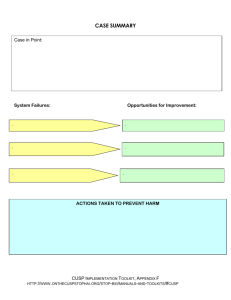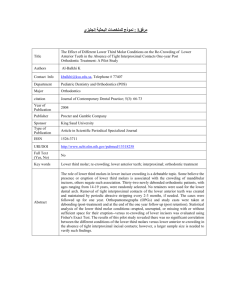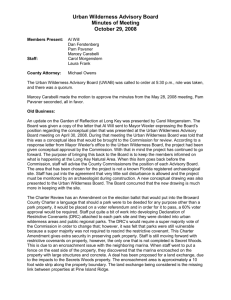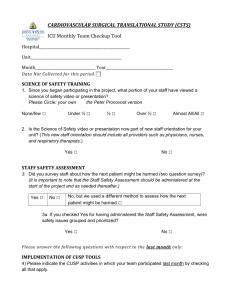Article,Carabelli
advertisement
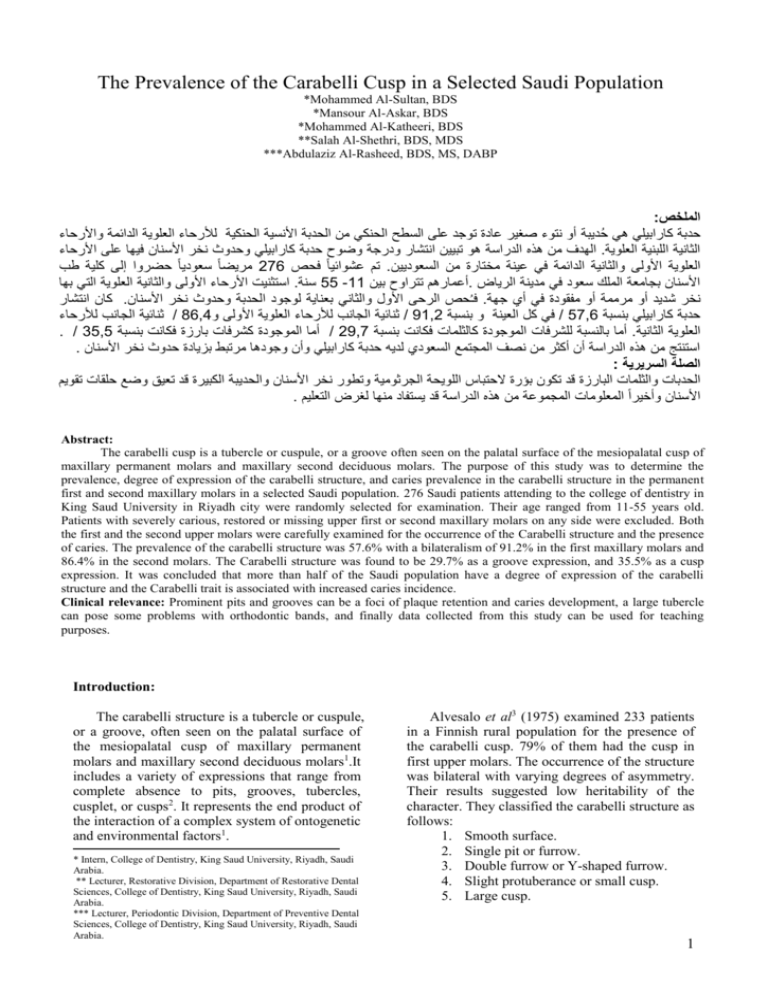
The Prevalence of the Carabelli Cusp in a Selected Saudi Population *Mohammed Al-Sultan, BDS *Mansour Al-Askar, BDS *Mohammed Al-Katheeri, BDS **Salah Al-Shethri, BDS, MDS ***Abdulaziz Al-Rasheed, BDS, MS, DABP :الملخص حدبة كارابيلي هي ُحديبة أو نتوء صغير عادة توجد على السطح الحنكي من الحدبة األنسية الحنكية لألرحاء العلوية الدائمة واألرحاء الهدف من هذه الدراسة هو تبيين انتشار ودرجة وضوح حدبة كارابيلي وحدوث نخر األسنان فيها على األرحاء.الثانية اللبنية العلوية مريضا ً سعوديا ً حضروا إلى كلية طب672 تم عشوائيا ً فحص.العلوية األولى والثانية الدائمة في عينة مختارة من السعوديين استثنيت األرحاء األولى والثانية العلوية التي بها. سنة55 -11 أعمارهم تتراوح بين. األسنان بجامعة الملك سعود في مدينة الرياض كان انتشار. فـُحص الرحى األول والثاني بعناية لوجود الحدبة وحدوث نخر األسنان.نخر شديد أو مرممة أو مفقودة في أي جهة ثنائية الجانب لألرحاء/ 4278 ثنائية الجانب لألرحاء العلوية األولى و/ 2176 في كل العينة و بنسبة/ 5772 حدبة كارابيلي بنسبة . / 5575 أما الموجودة كشرفات بارزة فكانت بنسبة/ 6277 أما بالنسبة للشرفات الموجودة كالثلمات فكانت بنسبة.العلوية الثانية . استنتج من هذه الدراسة أن أكثر من نصف المجتمع السعودي لديه حدبة كارابيلي وأن وجودها مرتبط بزيادة حدوث نخر األسنان : الصلة السريرية الحدبات والثلمات البارزة قد تكون بؤرة الحتباس اللويحة الجرثومية وتطور نخر األسنان والحديبة الكبيرة قد تعيق وضع حلقات تقويم . األسنان وأخيرا ً المعلومات المجموعة من هذه الدراسة قد يستفاد منها لغرض التعليم Abstract: The carabelli cusp is a tubercle or cuspule, or a groove often seen on the palatal surface of the mesiopalatal cusp of maxillary permanent molars and maxillary second deciduous molars. The purpose of this study was to determine the prevalence, degree of expression of the carabelli structure, and caries prevalence in the carabelli structure in the permanent first and second maxillary molars in a selected Saudi population. 276 Saudi patients attending to the college of dentistry in King Saud University in Riyadh city were randomly selected for examination. Their age ranged from 11-55 years old. Patients with severely carious, restored or missing upper first or second maxillary molars on any side were excluded. Both the first and the second upper molars were carefully examined for the occurrence of the Carabelli structure and the presence of caries. The prevalence of the carabelli structure was 57.6% with a bilateralism of 91.2% in the first maxillary molars and 86.4% in the second molars. The Carabelli structure was found to be 29.7% as a groove expression, and 35.5% as a cusp expression. It was concluded that more than half of the Saudi population have a degree of expression of the carabelli structure and the Carabelli trait is associated with increased caries incidence. Clinical relevance: Prominent pits and grooves can be a foci of plaque retention and caries development, a large tubercle can pose some problems with orthodontic bands, and finally data collected from this study can be used for teaching purposes. Introduction: The carabelli structure is a tubercle or cuspule, or a groove, often seen on the palatal surface of the mesiopalatal cusp of maxillary permanent molars and maxillary second deciduous molars1.It includes a variety of expressions that range from complete absence to pits, grooves, tubercles, cusplet, or cusps2. It represents the end product of the interaction of a complex system of ontogenetic and environmental factors1. * Intern, College of Dentistry, King Saud University, Riyadh, Saudi Arabia. ** Lecturer, Restorative Division, Department of Restorative Dental Sciences, College of Dentistry, King Saud University, Riyadh, Saudi Arabia. *** Lecturer, Periodontic Division, Department of Preventive Dental Sciences, College of Dentistry, King Saud University, Riyadh, Saudi Arabia. Alvesalo et al3 (1975) examined 233 patients in a Finnish rural population for the presence of the carabelli cusp. 79% of them had the cusp in first upper molars. The occurrence of the structure was bilateral with varying degrees of asymmetry. Their results suggested low heritability of the character. They classified the carabelli structure as follows: 1. Smooth surface. 2. Single pit or furrow. 3. Double furrow or Y-shaped furrow. 4. Slight protuberance or small cusp. 5. Large cusp. 1 In a study made by Rusmah (1992)4, 320 maxillary casts of Malaysian children were examined for the occurrence of the Carabelli trait on the maxillary first permanent molars. The total trait frequency was observed to be 51.6 %. The cusp was observed to be more bilateral. 17.43% occurrence of the carabelli cusp in maxillary molars was reported by Falomo (2002)5 after examining 2,604 Nigerians. There was 70.71% bilateralism in the upper first molars, with 1.98% simultaneous bilateralism in the upper first and second molars. Unilateralism in the upper first molars accounted for 25.99%. The purpose of this study was to determine the prevalence, degree of expression of the carabelli structure, and caries prevalence in the carabelli structure in the permanent first and second maxillary molars in a selected Saudi population. Materials and methods: 276 Saudi patients attending to the college of dentistry in King Saud University in Riyadh city were randomly selected for examination. Their age ranged from 11-55 years old. Any patient with severely carious, restored or missing upper first or second maxillary molars on any side was excluded. Both the first and the second upper molars were carefully examined for the occurrence of the structure and the presence of caries, from the occlusal view using a mouth mirror and dental explorer. Under efficient light condition, caries presence was examined by pulling the explorer tip over the groove created by the cusp looking for stickiness, and avoiding apically directed force6,7,8. The structure and its degree of expression was classified into three categories: 1. Smooth surface or absence of the structure. 2. Depression or groove. 3. Prominent cusp. Three examiners collected the data. For interexaminer calibration, and before starting the data collection, a teaching lesson with an expert examiner was made to unify standards of examination. At the beginning, 20 patients were examined by all examiners, in which the first examiner performed examination and recorded data followed by the second and third examiners in an orderly manner. The data was then crossmatched using the Kappa value. All statistical analysis was calculated using the SPSS program version 10, then descriptive data analysis was used to report findings. Results: A high degree of interexaminer calibration was observed with the first twenty patients examined by the three examiners. The mean Kappa values were 0.89 for the detection of the carabelli structure and 1.00 for the detection of caries. Out of the 276 patients, 159 individuals had some sort of expression of the carabelli trait (57.6%) in relation to number of teeth, while the remaining 117 patients did not have any expression of the structure (42.4%), i.e. smooth surface (Table 1). Table 2 shows that 35.5% of patients had cusp expressions, while 29.7% had groove expressions in at least one tooth. The degree of expression of the carabelli trait in the first and in the second maxillary molar teeth are shown in tables 3 and 4 respectively. Patient frequency Prevalence (%) Smooth Surface 117 42.4 Carabelli trait 159 57.6 Total 276 100 Structure Table 1. Prevalence of patients having the carabelli trait. Groove or Depression Structure present in Prominent Cusp Patient frequency Percentage (%) Patient frequency Percentage (%) One out of the four molars 7 2.5 10 3.6 Two out of the four molars 67 24.3 68 24.6 Three out of the four molars 4 1.4 2 0.7 Four out of the four molars 4 1.4 18 6.5 Total 82 29.7 98 35.5 Table 2. Frequency and percentage of patients having the carabelli trait expression in relation to number of teeth. 2 Tables 5 and 6 show the bilateralism of the Carabelli structure in relation to the maxillary first and second molars respectively. In the first maxillary molar, the total bilateralism, regardless of the type of expression, was found to be 91.2%, of which 36.5% was groove bilateralism, and 54.7% was cusp bilateralism. And in the second maxillary molar, Bilateralism was 86.4%, of which 45.4% was groove bilateralism, and 41% was cusp bilateralism. Simultaneous bilateralism in the first and second molars, regardless of the type of expression, was 7.97%. Caries prevalence in the first and second molars is shown in table 7. Teeth with no carabelli structure had no caries. The prevalence of caries in the Carabelli structure was the same (16.8%) for the first and the second molars separately. For the groove expression, caries prevalence was 2.9% in the first molar and 4.8% in the second molar. And for the cusp expression, it was 13.9% in the first molar and 12% in the second molar. Upper first molar Criteria Absence of structure Groove or depression Prominent cusp Total (N= 552) Percentage (%) Total % 242 43.8 43.8 125 22.7 185 33.5 552 100 Frequency 56.2 100 Table 3. Degree of expression of the carabelli trait in the upper first molars Upper second molar Criteria Absence of structure Groove or depression Prominent cusp Total (N= 552) Percentage (%) Total % 469 85 85 44 8 39 7 552 100 Frequency 15 100 Table 4. Degree of expression of the carabelli trait in the upper second molars Criteria Groove or depression unilaterally Groove or depression bilaterally Prominent cusp unilaterally Groove on one side cusp on the other side Prominent cusp bilaterally Carabelli structure Frequency (N = 159) Percentage (%) 3 1.9 58 36.5 5 3.1 6 3.8 87 54.7 Table 5. Patient bilateralism in relation to the upper first molars. Criteria Groove or depression unilaterally Groove or depression bilaterally Prominent cusp unilaterally Groove on one side cusp on the other side Prominent cusp bilaterally Carabelli structure Frequency (N = 44) Percentage (%) 3 6.8 20 45.4 2 4.5 1 2.3 18 41 Table 6. Patient bilateralism in relation to the upper second molars. Discussion: Since three examiners collected the data, it was important to unify and standardize their method of examination and data collection. The mean Kappa Values obtained were high, which suggest that the three examiners reached an excellent interexaminer reliability. The present study reveals that more than one half of the Saudi population have a degree of expression of the Carabelli structure. The results were very close to those reported by Rusmah (1992) (51.6%). Prominent pits and grooves can be a foci of plaque retention and caries development, and a large tubercle can pose some problems with orthodontic bands Bilateralism of the trait, in this study, was very high. This supports the findings of other researchers 3,4,5,10,11, they agree that bilateralism of the trait is more frequent. Although some investigators, such as Biggerstaff (1973)1 and (1972)9, suggested that bilateralism or mirroring is not a factor in the carabelli trait, even among twins. Simultaneous Bilateralism in the upper first and second molars was found to be low, which agrees with Falomo’s5 findings. An interesting result was found, which is if the second upper molars had prominent cusps bilaterally, the upper first molars would have prominent cusps 3 First molar Criteria Smooth Surface Carabelli trait (N = 552) Caries frequency Frequency percentage (%) 242 0.0 0.0 No. of teeth 125 groove 310 cusp Second molar 9 52 185 Frequency percentage (%) 469 0.0 0.0 2.9 16.8 43 (N = 552) Caries frequency No. of teeth 44 83 4 14 13.9 39 4.8 16.8 10 12 Table 7. Frequency and percentage of caries in the first and second molars. bilaterally as well. But it is not true for the grooves. This could be attributed to genetics, as some investiga-tors1,2,12,13,14 reported that it may have a big influence on the carabelli trait. Many studies3,4,11,15 failed to show any sex dimorphism in the occurrence of the trait, although some investigators16,17 observed a sex-linked pattern. Therefore, the relationship of sex to the Carabelli trait was not investigated in this study. In the first molars, it was found that the cusp expression showed higher caries prevalence (23.3) when compared to groove expression (7.2%), this is true for the second molar as well. This finding can be explained by the fact that the cusp expression has a tubercle in addition to the groove; this tubercle may act as a physical barrier against the cleansing mechanisms of a tooth brush and physiological cleaning by the tongue movement and the salivary flow. In cases where the Carabelli structure was absent, caries was not detected which supports the idea that the Carabelli structure presents a foci for plaque accumulation and caries development. The method by which caries was examined, i.e. avoiding apically directed force, might have contributed to the low caries prevelance6,7,8. Future studies should be made to assess the relationship of the carabelli trait to genetics and its heritability. The carabelli trait should also be studied in relation to sex. Conclusion: According to the criteria of the present study, the following conclusions can be drawn: 1. 2. The prevalence of the Carabelli trait in a selected Saudi population was 57.6%. The Carabelli trait is associated with increased caries prevalence. 3. Dentists are advised to perform a careful examination to the lingual surfaces of the maxillary first and second molars to roll out the presence of the Carabelli structure and caries. Acknowledgment: We wish to thank Dr. Nazeer Khan for his help and assistance in the statistics used in this research. References: 1. Biggerstaff R.H., Heritability of the Carabilli Cusp in Twins; J Dent Res. 1973;52(1):40-44. 2. B. S. Kraus, R. E. Jordan, L. Abrams, Kraus’s Dental Anatomy and Occlusion; Second Edition, ch.5:75,1992. 3. Alvesalo L.,Nuutila M., Portin P, The Cusp of Carabelli. Occurrence in First Upper Molars and Evaluation of its Heritability. Acta Odontol Scand. 1975;33(4):191-197. 4. Rusmah M.,The Cusp of Carabelli in Malaysians. Odontostomatol Trop.1992;15(1):13-15. 5. Falomo OO.,The cusp of Carabelli: Frequency, Distribution, Size and Clinical Significance in Nigeria. West Afr J Med. 2002;21(4):322-324. 6. Yassin OM. In Vitro Studies of the Effect of a Dental Explorer on the Formation of an Artificial Carious Lesion. ASDC J Dent Child. 1995;62(2):111-117. 7. Van Dorp CS, Exterkate RA, Ten Cate JM. The Effect of Dental Probing on Subsequent Enamel Demineralization. ASDC J Dent Child. 1988;55(5):343347. 8. Warren JJ, Levy SM, Wefel JS. Explorer Probing of Root Caries Lesions: an in Vitro Study. Spec Care Dentist. 2003;23(1):18-21. 9. Biggerstaff R.H. A Quantitative and Qualitiative Study of the Post-canine Dentition of Twins, Ph.D dissertation , university of Pennsylvania 1972. 10. Joshi M.R. Carabelli Trait on Maxillary Second Deciduous and First Permanent Molars in Hindus. Archs Oral Biol. 1975;20:699-700. 11. Thomas C.J., Kotze T. Jr W., Nash J.M. The Carabelli Trait in the Mixed Deciduous and Permanent Dentition of Five South African Populations. Archs Oral Biol.1986;31:145-147. 12. Lasker, G. Genetical Analysis of Racial Traits of the Teeth. Symp Quant Biol. 1950;15:191-213. 4 13. Dahlberg, A.A. The Analysis of the American Indian Dentition, in Brothwell, D.R. (ed). Dental Anthropology, New York, Pergamon Press 1963. 14. Goodman, H.O.() Genitic Parameters of Dentofacial Development, J Dent Res. 1965;44:174-184. 15. Saunders S.R., Mayhall J.T. Development Patterns of Human Dental Morphological Traits. Archs Oral Biol. 1982;27:45-49. 16. Kieser J.A., Preston C.B. The Dentition of the Lengua Indians of Paraguay. Am J Phys Anthrop. 1981;55:485490. 17. Kaul V., Prakash S. () Morphological Features of Jat Dentition. Am. J Phys Anthrop. 1981;54:123-127. 5
